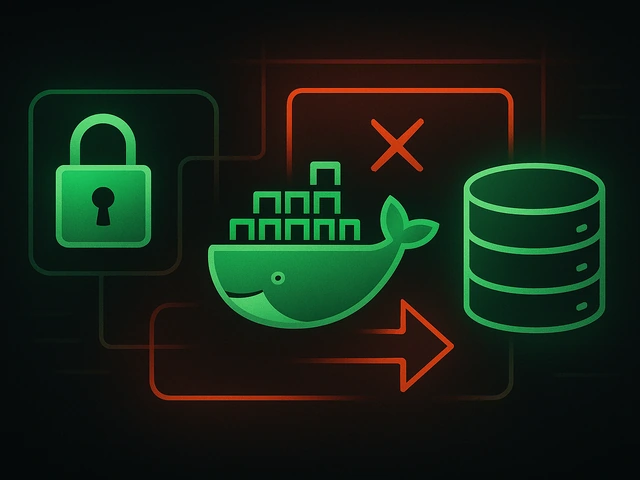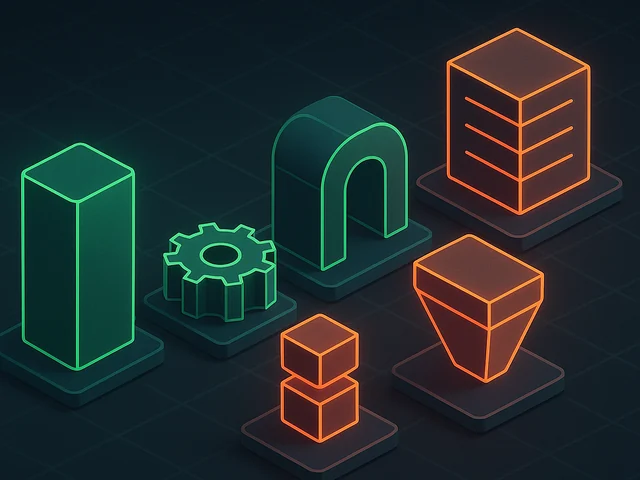
According to statistics, the vast majority of sites on the Internet are hosted on servers running Unix-like systems, most often the Linux family. This is motiva...
3v-Hosting Blog
9 min read

Photo by ThisIsEngineering. Source: Pexels
Technology today has brought unparalleled convenience, connectivity, and innovation. However, it also carries a hidden environmental cost. Every click, stream, and download relies on vast data centers powered by electricity-hungry servers. As our reliance on digital infrastructure grows, so too does its carbon footprint. From the energy required to cool data centers to the environmental toll of manufacturing hardware, the ecological impact of our online lives is increasingly difficult to ignore.
In response, a new wave of sustainable technology is emerging. Green hosting, energy-efficient computing, and environmentally conscious design practices are reshaping how we build and maintain the digital world. Tech companies, educators, and developers alike are beginning to prioritize ecological responsibility, recognizing that innovation must go hand-in-hand with sustainability.
This blog explores the intersection of online computer science and the growing movement toward hosting ecology. We’ll look at how digital infrastructure affects the planet, the rise of eco-friendly hosting and server management solutions, and how developers and learners in the field of computer science can help drive the green server revolution forward.
Behind every website, app, and digital service is a powerful network of data centers: facilities filled with servers that run around the clock to process and store vast amounts of information. These data centers are among the most energy-intensive components of the digital ecosystem. Globally, they consume about 1.5% of the world’s electricity, a figure expected to rise as demand for digital services increases. In major tech hubs, these centers rival heavy industries in terms of energy consumption, raising serious concerns about their long-term environmental impact.
Cloud computing, while offering scalability and efficiency, also contributes significantly to carbon emissions. Though “the cloud” may sound intangible, its physical footprint is enormous. Millions of servers, backup systems, and cooling units must be constantly powered and maintained. Similarly, emerging technologies like blockchain and cryptocurrency mining add another layer of environmental strain. Bitcoin mining alone has been estimated to consume more electricity annually than some small countries.
Beyond electricity use, there are hidden environmental costs. Cooling infrastructure needed to prevent server overheating requires vast amounts of water and energy. The production of servers and other hardware involves the extraction of rare earth minerals, high emissions from manufacturing processes, and eventually, the challenge of managing e-waste. With short hardware lifespans and rapid technological turnover, tons of obsolete equipment end up in landfills each year, posing risks to both the environment and human health.
In short, while the digital world powers progress, it also places a significant burden on the planet. Recognizing and addressing these costs is the first step toward building a more sustainable digital future.

Photo by Andrea Piacquadio. Source: Pexels
As awareness of the environmental impact of digital infrastructure grows, the tech industry is turning to innovative solutions that reduce energy use, minimize waste, and improve overall efficiency. From smarter software strategies to breakthroughs in hardware and infrastructure, eco-friendly computing is reshaping the way we build and operate the digital world.
One of the most effective ways to cut energy consumption is through virtualization. By running multiple virtual machines on a single physical server, organizations can maximize server utilization and significantly reduce the number of physical machines needed. Server consolidation through virtualization leads to lower power usage, reduced cooling demands, and more efficient use of data center space.
Edge computing brings data processing closer to the source—whether that’s a user’s device, an IoT sensor, or a smart appliance. By reducing the distance data needs to travel, edge computing minimizes latency and offloads some of the computational burden from central data centers. This not only improves performance but also cuts down on the energy required for data transmission and centralized processing.
Cooling systems are among the largest contributors to data center energy consumption. New AI-driven technologies are now being deployed to optimize these systems. By continuously analyzing temperature, humidity, and server loads, AI can dynamically adjust cooling operations for maximum efficiency, reducing unnecessary energy use without compromising performance or hardware longevity.
The development of low-power components, especially ARM-based processors, offers a promising path toward greener computing. ARM chips are known for their energy efficiency and are increasingly being used in data centers, laptops, and mobile devices. Compared to traditional x86 architecture, ARM-based servers consume less power while still delivering strong performance, making them ideal for sustainable deployments.
Manufacturers are also rethinking the physical construction of servers and other hardware. By using recyclable materials, designing for disassembly, and incorporating components made from sustainable sources, companies can reduce the lifecycle impact of their products. Efforts to build a circular economy in tech are gaining traction in institutions where you can get a complete computer science degree online fast, with some vendors offering take-back programs and modular systems that extend hardware lifespan.
As more businesses and individuals aim to reduce their environmental impact, selecting a green hosting provider has become a critical part of building a sustainable digital presence. However, not all hosting companies are created equal. Knowing what to look for can help you choose a provider that aligns with your environmental values without compromising performance or reliability.
Here are some key factors you should evaluate when choosing a green hosting provider:
• Energy Sources: Choose providers that use 100% renewable energy or purchase certified carbon offsets to power their data centers.
• Data Center Infrastructure: Look for transparency in how facilities are built and operated, including energy efficiency practices and resource management.
• Cooling Methods: Favor hosts that use energy-saving technologies such as liquid cooling, AI-powered climate control, or other innovative systems.
• E-Waste Management: Check if the provider has responsible recycling programs for outdated hardware and follows proper e-waste disposal protocols.
• Sustainability Commitments: Evaluate long-term environmental goals, public sustainability reports, or partnerships with green initiatives.
To ensure credibility, check for recognized environmental certifications. These labels signal that a provider meets strict efficiency and sustainability standards:
• ENERGY STAR: Indicates energy-efficient hardware and data center practices.
• LEED (Leadership in Energy and Environmental Design): Recognizes sustainable building design and operations.
• ISO 50001: Focuses on energy management systems to continuously improve efficiency.
• Green Power Partnership (U.S. EPA): Signals the use of green energy sources like wind or solar.
These certifications help distinguish genuinely green providers from those engaging in superficial “greenwashing.”
As our reliance on digital infrastructure continues to grow, so does our responsibility to understand and address its environmental consequences. From the immense energy demands of data centers to the carbon footprint of cloud services and hardware production, the ecological impact of hosting and computing is both significant and urgent. Fortunately, the green server movement is rising to meet the challenge, bringing with it innovations in energy efficiency, sustainable hardware design, and environmentally conscious practices across the tech ecosystem.
The future of computer science must be rooted in sustainability. As developers, educators, businesses, and users, we all have a role to play—whether by choosing green hosting providers, writing more efficient code, or advocating for cleaner technologies.
Now is the time to take action. Support hosting companies that prioritize the planet. Learn about sustainable tech practices and incorporate them into your work. Together, we can help build a digital world that not only powers innovation but also respects the limits of our environment.

Effective backup strategies for Docker applications: how to protect volumes, data, and configurations while avoiding common mistakes, and quickly restore servic...

A clear guide to what VPS is used for: real cases, examples for developers, business setups, VPN, CI/CD and more. Learn how to choose the right VPS plan.

SOLID principles help create flexible, scalable, and maintainable code. We break down SRP, OCP, LSP, ISP, and DIP with examples and practical recommendations.